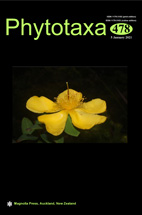Abstract
Ophiocordyceps is entomopathogenic and is the best studied genus in Ophiocordycipitaceae. Members of Ophiocordyceps and ants form sophisticated interactions. However, taxonomy and evolutionary relationships of this group of pathogens remain unclear. During a survey in Changbai Mountains, Jiling Province, China, a new entomogenous species, Ophiocordyceps vespulae sp. nov. was found as a parasite on wasps (Hymenoptera). The new species is introduced with evidence from morphology and molecular analysis. This species is distinguished from closely related species by white to faint yellow stromata, shorter ascomata and asci, and smaller ascospores. We provide a phylogeny for Ophiocordyceps based on combined LSU, ITS, TEF1α and RPB2 DNA sequence data and the taxonomic status of the species is briefly discussed.

